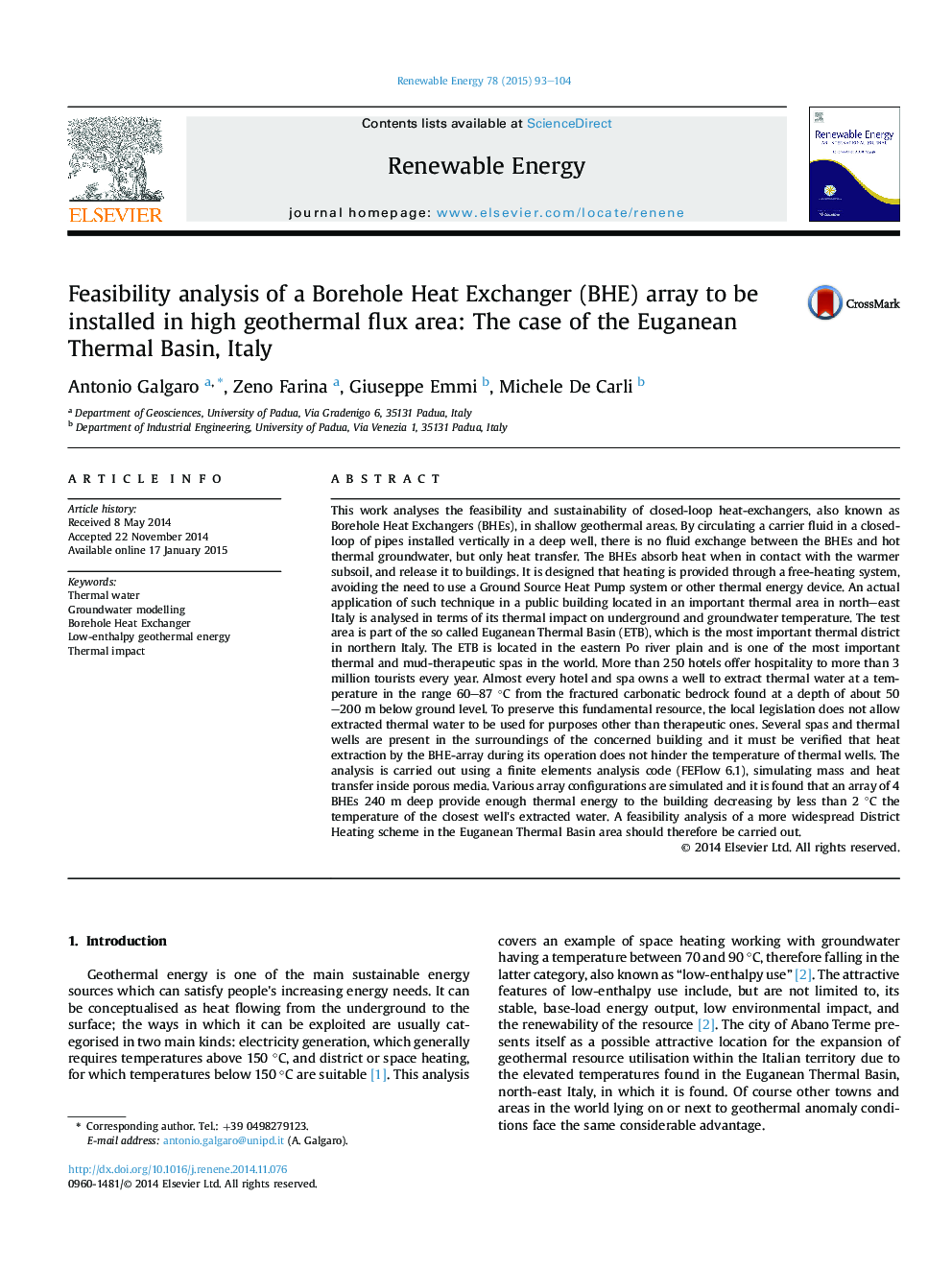| کد مقاله | کد نشریه | سال انتشار | مقاله انگلیسی | نسخه تمام متن |
|---|---|---|---|---|
| 6767154 | 512460 | 2015 | 12 صفحه PDF | دانلود رایگان |
عنوان انگلیسی مقاله ISI
Feasibility analysis of a Borehole Heat Exchanger (BHE) array to be installed in high geothermal flux area: The case of the Euganean Thermal Basin, Italy
دانلود مقاله + سفارش ترجمه
دانلود مقاله ISI انگلیسی
رایگان برای ایرانیان
کلمات کلیدی
موضوعات مرتبط
مهندسی و علوم پایه
مهندسی انرژی
انرژی های تجدید پذیر، توسعه پایدار و محیط زیست
پیش نمایش صفحه اول مقاله

چکیده انگلیسی
This work analyses the feasibility and sustainability of closed-loop heat-exchangers, also known as Borehole Heat Exchangers (BHEs), in shallow geothermal areas. By circulating a carrier fluid in a closed-loop of pipes installed vertically in a deep well, there is no fluid exchange between the BHEs and hot thermal groundwater, but only heat transfer. The BHEs absorb heat when in contact with the warmer subsoil, and release it to buildings. It is designed that heating is provided through a free-heating system, avoiding the need to use a Ground Source Heat Pump system or other thermal energy device. An actual application of such technique in a public building located in an important thermal area in north-east Italy is analysed in terms of its thermal impact on underground and groundwater temperature. The test area is part of the so called Euganean Thermal Basin (ETB), which is the most important thermal district in northern Italy. The ETB is located in the eastern Po river plain and is one of the most important thermal and mud-therapeutic spas in the world. More than 250 hotels offer hospitality to more than 3 million tourists every year. Almost every hotel and spa owns a well to extract thermal water at a temperature in the range 60-87 °C from the fractured carbonatic bedrock found at a depth of about 50-200 m below ground level. To preserve this fundamental resource, the local legislation does not allow extracted thermal water to be used for purposes other than therapeutic ones. Several spas and thermal wells are present in the surroundings of the concerned building and it must be verified that heat extraction by the BHE-array during its operation does not hinder the temperature of thermal wells. The analysis is carried out using a finite elements analysis code (FEFlow 6.1), simulating mass and heat transfer inside porous media. Various array configurations are simulated and it is found that an array of 4 BHEs 240 m deep provide enough thermal energy to the building decreasing by less than 2 °C the temperature of the closest well's extracted water. A feasibility analysis of a more widespread District Heating scheme in the Euganean Thermal Basin area should therefore be carried out.
ناشر
Database: Elsevier - ScienceDirect (ساینس دایرکت)
Journal: Renewable Energy - Volume 78, June 2015, Pages 93-104
Journal: Renewable Energy - Volume 78, June 2015, Pages 93-104
نویسندگان
Antonio Galgaro, Zeno Farina, Giuseppe Emmi, Michele De Carli,